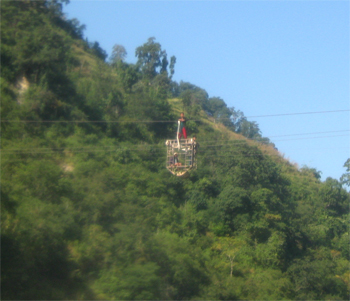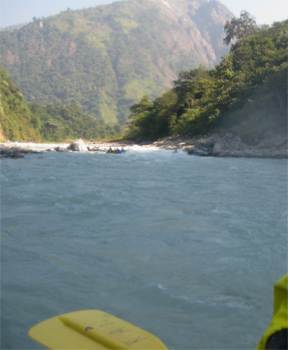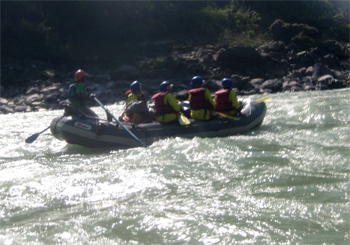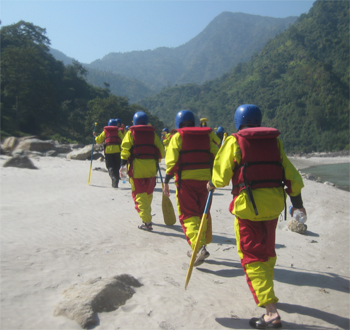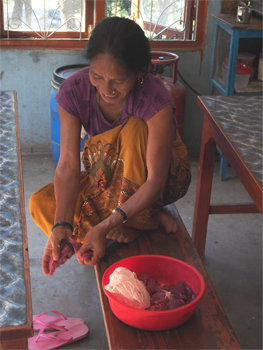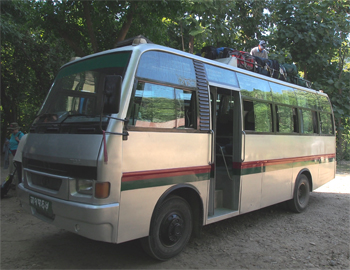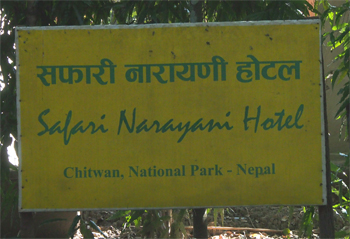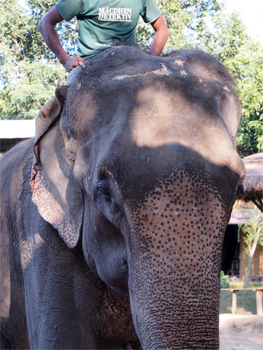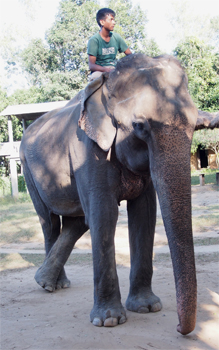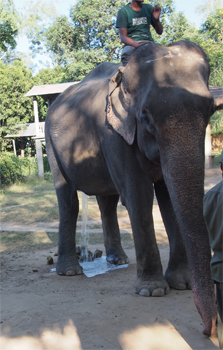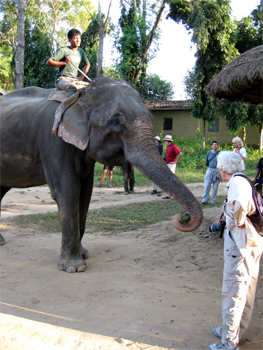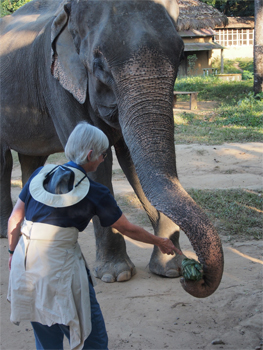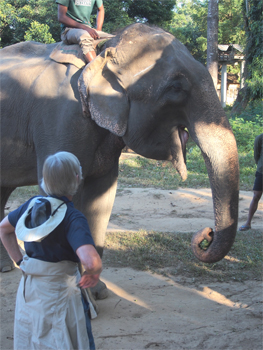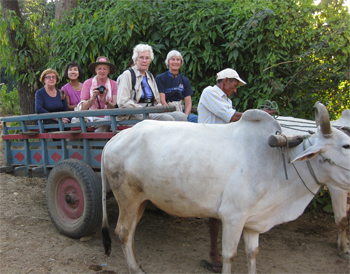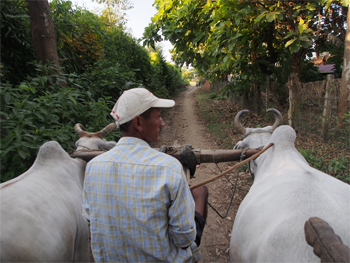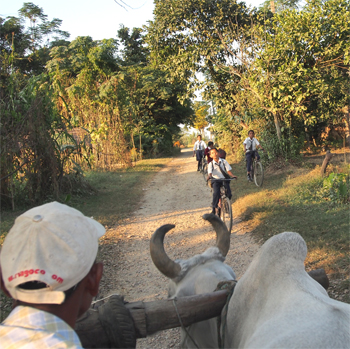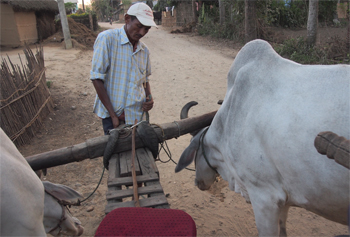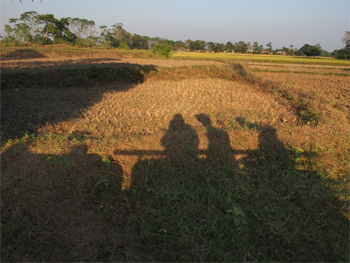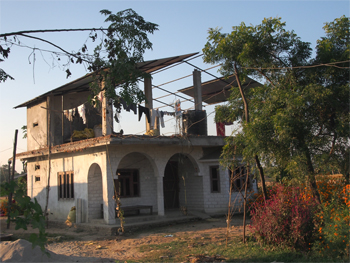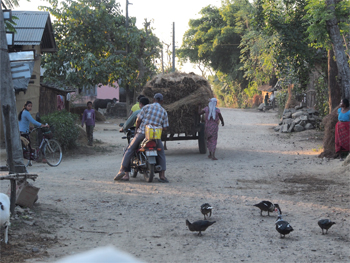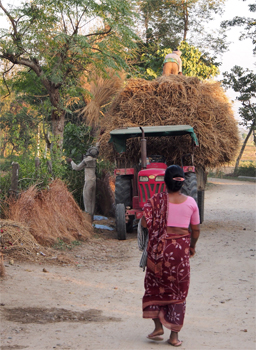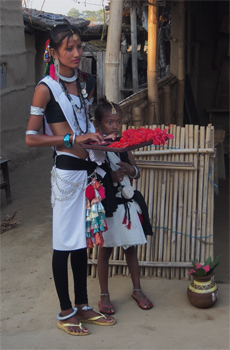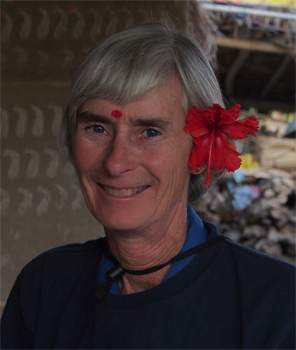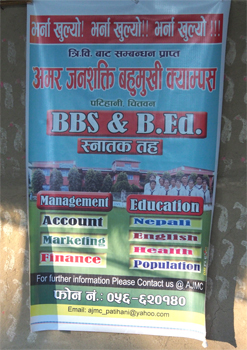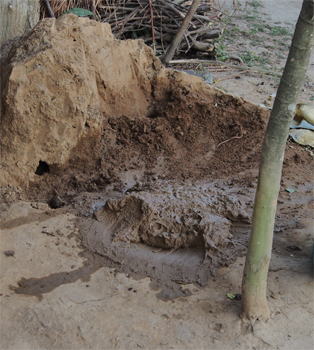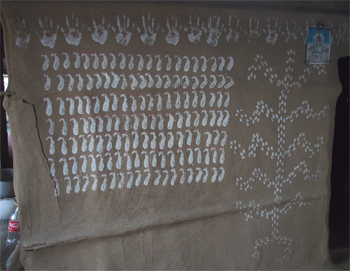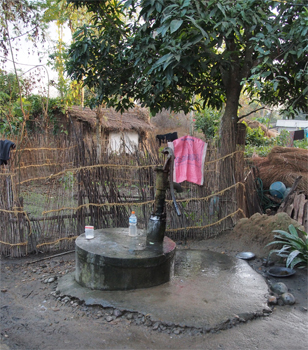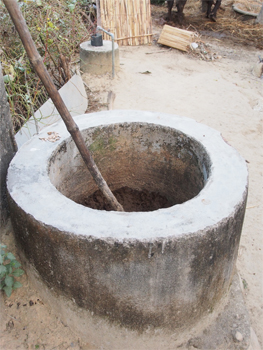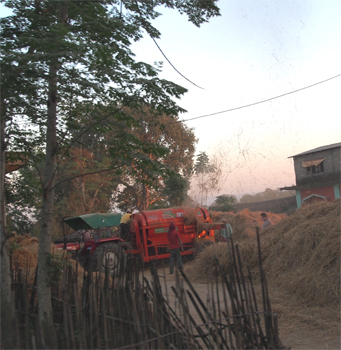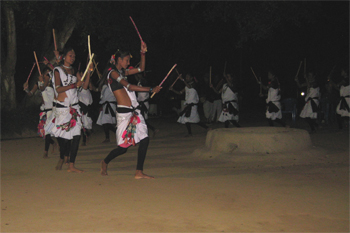Sun., 11/4/12 – Seti Camp to Chitwan National Park
This morning we dressed in all our whitewater gear and set off downstream at 9 AM.
Another breeches buoy |
Better rapids
|
Better rapids |
Rafting finished
|
Woman cutting up meat
|
After arriving at Chitwan National Park and the Safari Narayani Lodge, we ate a lunch buffet - spaghetti with mystery meat sauce, French fries, more steamed vegetables, and banana fritters for dessert. We had an hour to ourselves and then walked to the elephant yard where our naturalist, Tulsi, talked about the five trained female elephants they use for elephant treks to look for rhinos and tigers. There is not much chance of seeing a tiger!
|
Our last chariot
|
|
As elephants age they lose pigment in their ears and trunk and develop freckles or age spots.
|
Elephants can't lie down for more than an hour because their lungs have no pleural cavities and would collapse, so they rest by standing on three legs and crossing the fourth leg.
|
Elephants eat and drink a lot because they only digest about 40% of what they eat - this is the result.
|
Feeding Pawan Kali, age 45 years, a cookie made by tying goodies inside elephant grass. |
"Give me that cookie!" |
Greedy!
|
We rode ox carts to the Tharu village of Bankatta. We were greeted, with a hibiscus flower and a red dot (bindi) on the forehead, by a young woman dressed in a traditional costume different from what we have seen so far. We looked at the few items in their "museum" - fishing net, fishing basket, grinding stone, ring for balancing loads on their heads, etc. The houses were constructed of pounded mud and decorated with hand and palm prints using rice mixed with water for the paint. This village has well water and hand pumps and solar electricity. Each house can use two light bulbs. The government is subsidizing a simple process for making methane gas for cooking. It is made from cow dung and outhouse substances. This keeps the people from chopping down trees in the Park.
|
|
Our ox cart ride
|
|
Kids riding home from school
|
The oxen drop their heads to lower the cart so people can disembark |
|
Typical house
|
Street scene |
Stacking the rice stalks
|
Waiting for us at the museum
|
Gale with her bindi and hibiscus |
Typical sign advertising education - these were all over Nepal |
Mud used to make the walls and floors of houses
|
Hand and palm prints decoration the wall |
Well in the back yard
|
Producing methane gas |
Mechanized threshing - the only time we saw a machine doing this on our whole trip
|
Before dinner, the villagers came to our lodge and performed several native dances. They are determined to preserve their culture.
|
Native dances
|
| Return to Top | Return to Nepal Itinerary | Return to Dreamcatcher Home Page |
